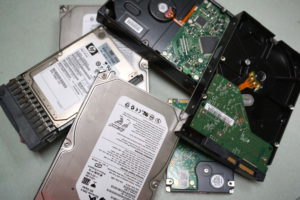 You click delete, push back your desk chair and breathe a sigh of relief. Those not-needed emails were cluttering up your inbox and they’re finally gone. You can finally focus on more important work. But your mind wanders back to the emails you just deleted. After all, email deletion has been a hot topic in the news.
You click delete, push back your desk chair and breathe a sigh of relief. Those not-needed emails were cluttering up your inbox and they’re finally gone. You can finally focus on more important work. But your mind wanders back to the emails you just deleted. After all, email deletion has been a hot topic in the news.
You put them in the Trash and clicked the “Delete Forever” button. That must mean they are no longer accessible. Your computer took care of it…right?
Think again.
Most likely, a copy of each and every one of those emails is still stored on your company’s server, still easily accessible and searchable. And unless your company regularly destroys their back-up servers properly, that email could live on for years. Even webmail providers like Google, Yahoo or AOL must hang on to records of deleted emails for sometimes unspecified periods of time due to government mandates.
Then how do you actually destroy email data? There exist a variety of ways, but some that are commonly used are:
- Overwriting a hard drive’s data with multiple characters
- Using a high-powered magnetic process called degaussing to damage the data until it is no longer retrievable
- Physically destroying the server beyond recognition with crushing tools, drills or specialized shredding equipment
Destroying data properly is no easy task and is critical for any organization handling sensitive data. Even small organizations can benefit from ensuring their data is securely disposed of.
Northeast Data Destruction uses its powerful shredding equipment to obliterate hard drives and then recycle the parts. Read and/or watch more about our media and hard drive destruction processes.
